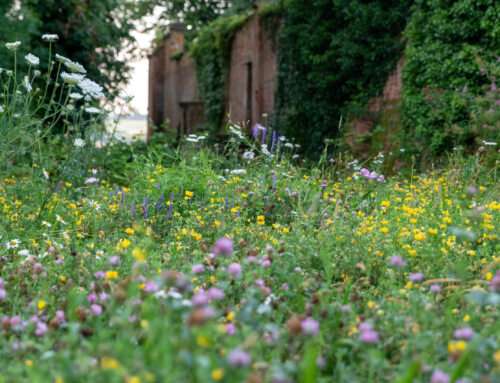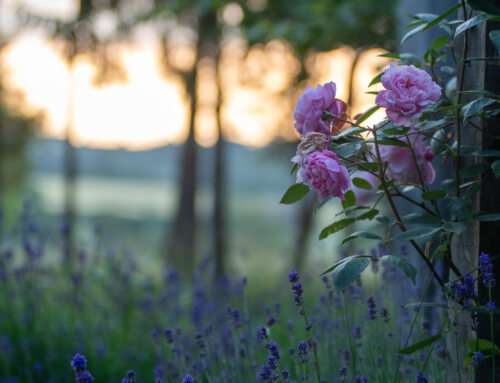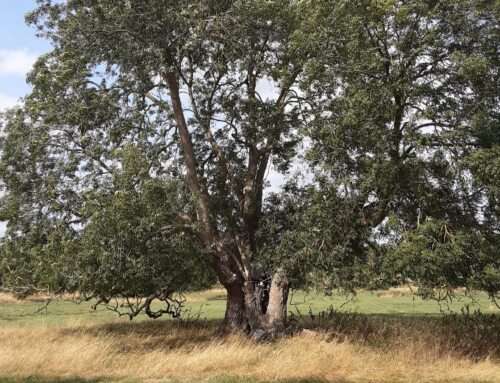Weeding The Organic Way – Does It Work?
With the weather alternating between sun and rain, the garden weeds are thriving. Bindweed snakes its way up and around our shrubs until you can barely see what’s under them, ground elder marches relentlessly across our borders, brambles burst forth through the foliage of our shrubs, clumps of meadow grass announce themselves in the gravel drive and fluffy dandelion seeds seem to float across the lawn before we even realised we had dandelions.
To clear the flower border or drive, using chemicals to eliminate weeds is almost an ingrained habit. Mixing up your potion in a specially bought sprayer, pumping up the pressure until it feels like it will burst, then aiming the nozzle at the enemy – well it can feel very purposeful. But a growing number of us are looking for alternatives to chemicals. We might be concerned about the effect on human health or that the spray will drift onto and kill the plants you want to keep.
One of the most used weed killers for both gardens and agriculture is glyphosate, and it certainly is effective. After being sprayed on foliage, it is taken down into the roots where it stops the plant from making a protein needed for growth. Manufacturers of glyphosate also explain that any glyphosate that hits the soil is quickly broken down by soil microbes.

By Jared Hutchings, Garden Designer


In a domestic situation, it is much more accessible to reduce the use of chemicals.
For flower beds or gravel drives, there are weed-killers on the market that use natural chemicals – such as fatty acids like pelargonic acid, or acetic acid (concentrated vinegar). Effectively they burn off the foliage of the weed and for some weeds, that will be the end. If the weed has a strong root system – like our old enemies ground elder and bindweed – then the weeds will be back. Again, you must make sure you don’t accidentally spray your valued plants, and when that ground elder or bindweed is deeply entwined within those beloved plants, this method ceases being practical.
For lawn weeds, many chemical weed killers contain a growth hormone that makes weeds like thistles and clover grow too quickly and consequently die, whilst the grass is left unaffected. I’ve yet to find an “organic” lawn weed killer that kills the weeds but not the grass.

So what to do? In lawns, persistent mowing regularly decapitates many weeds until they are eventually weakened and give up. If you don’t think of dandelions or daisies as a wildflower, then it’s a case of removing them with a hand fork or weeding tool, and then re-seeding bare patches in spring and autumn. Keeping your lawn healthy by scarifying (raking) and spiking it in the spring or autumn will also discourage the growth of moss.
For the gravel drive, most weed seeds have blown in, settled, and then germinated just below the surface. They will be shallow rooted and can be pulled out – just make sure you grip the weed low down to get out the roots. They can be burnt out with flame guns, but to mix metaphors, that does feel like a hammer to crack a nut.
For flower beds, firstly try to outcompete the weeds. If there is bare soil at the height of summer in your flower beds, then you have left a place for weeds to get established. Plant an ornamental plant in that empty space, making sure it’s the right kind of plant for the amount of sun and for the soil. In winter and early spring, the perennials will not have come through, so you will have a lot of bare soil.


Weeds will still come through and your secret weapon is a trowel and regular weeding. Get ahead of the enemy with a pre-emptive attack in March once the first flush of weeds have germinated. Rather like dead heading, there’s a hidden pleasure in April or May in tracing the roots of ground elder or nettles back through the soil and lifting and piling up great masses of root system. They come up easily, but it’s a war of attrition. If the roots of the weeds trace under a beloved perennial, then in spring, you could just lift the perennial, untangle the weed from it, re-plant your beloved plants and give it a good water. For deep-rooted weeds like thistles, you might need to bring in the artillery and get a spade, as you need to go deep to get right to the bottom of the tap root. For bindweed: I’m afraid, I’ve yet to win the war of attrition.
I write this with full respect to weeds – a beautiful plant welcome in many places but not my herbaceous borders! You can define what you see as a weed– I have listed mine above!
For further horticultural advice and guidance on the perfect plant to fill empty spaces in your border, pop into the Plant Centre where one of our friendly team will be happy to help.






